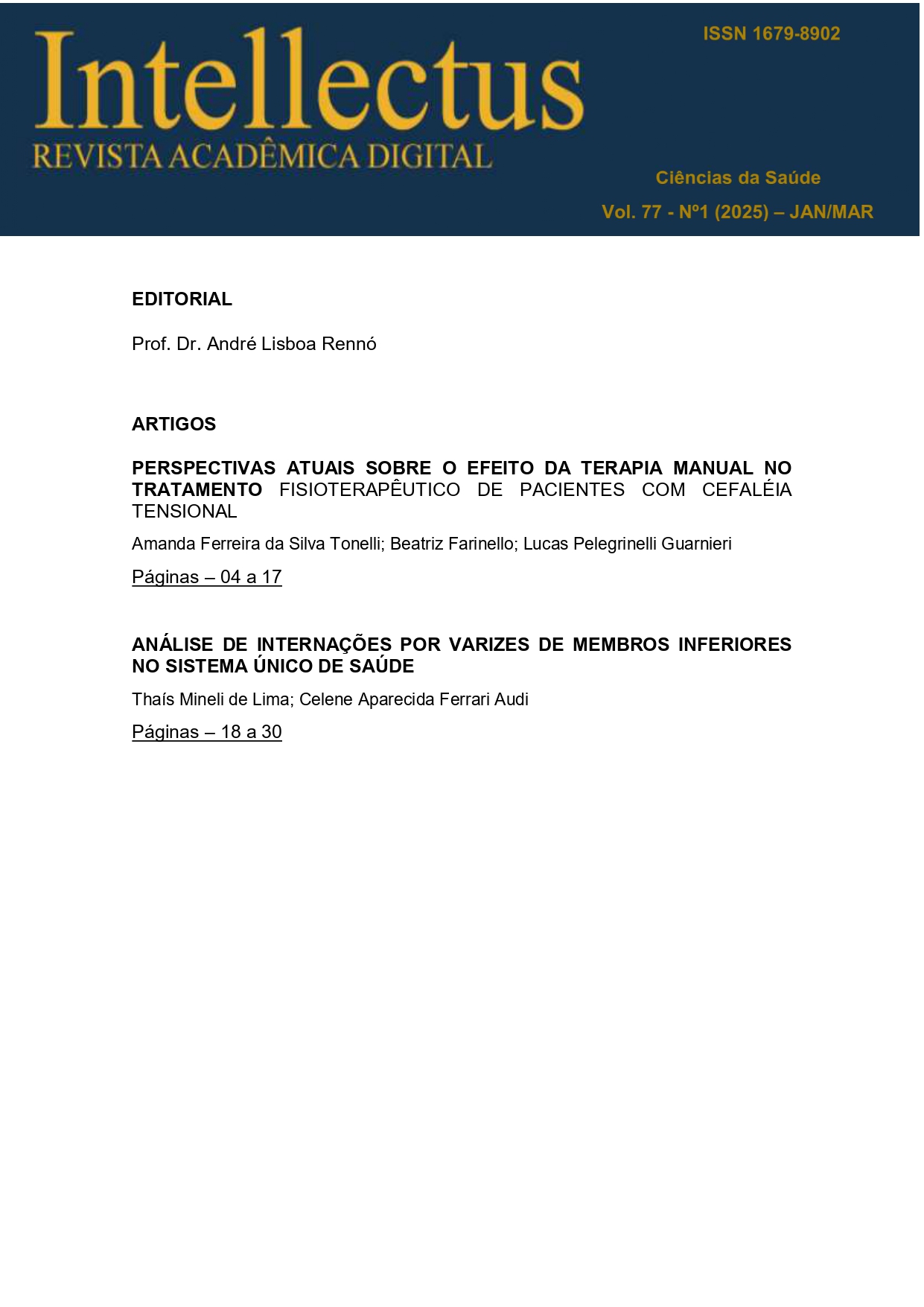Analysis of hospitalizations for lower limb varicose veins in the brazilian Unified Health System
DOI:
https://doi.org/10.21116/ri.v77i1.1021Keywords:
Varicose Veins, Venoactives, DATASUSAbstract
Lower limb varicose veins affect the daily quality of life of numerous patients, progressing to severe conditions. Objective: This study aims to analyze hospitalizations related to lower limb varicose veins by Brazilian regions and age groups, as provided by the Brazilian Unified Health System (SUS) between 2019 and 2023. Methods: A descriptive study was conducted using data from hospital admission authorizations (AIH) related to lower limb varicose veins, extracted from the DATASUS database for the period from January 2019 to December 2023. The analyzed variables included the number of hospitalizations, average duration, average cost, total cost, and deaths by region and age group. A literature review was conducted using the SciELO and PubMed platforms. Results: The Southeast region had the highest number of hospitalizations, and the age group with the most hospitalizations was between 50 and 59 years, which also accounted for the highest total expenditure. The average hospitalization cost over the past five years was R$ 726.39, and the age group between 70 and 79 years had the highest average cost during the study period. The average length of hospital stay in days was consistently higher in the North region and among individuals aged 80 years or older, who also recorded the highest number of deaths. Conclusion: The data analyzed suggest regional disparities in access to healthcare interventions for lower limb varicose veins, highlighting the urgent need for public policies to improve this scenario.
References
BRASIL. Ministério da Saúde. DATASUS (Departamento de Informática do SUS) - TabNet Win32 3.2, 2024. Disponível em: <http://tabnet.datasus.gov.br/cgi/tabcgi.exe?sih/cnv/niuf.def>. Acesso em: 19 jun. 2024.
GAWAS, M. et al. A Comprehensive Review on Varicose Veins: Preventive Measures and Different Treatments. Journal of the American Nutrition Association, v. 41, n. 5, p. 499–510, 4 jul. 2022.
KIKUCHI, R. et al. Brazilian guidelines on chronic venous disease of the Brazilian Society of Angiology and Vascular Surgery. Jornal Vascular Brasileiro, v. 22, p. e20230064, 2023.
LABROPOULOS, N. How Does Chronic Venous Disease Progress from the First Symptoms to the Advanced Stages? A Review. Advances in Therapy, v. 36, n. S1, p. 13–19, mar. 2019.
NICOLAIDES, A. et al. Management of chronic venous disorders of the lower limbs. Guidelines According to Scientific Evidence. Part I. International Angiology, v. 37, n. 3, maio 2018.
PANNIER, F.; RABE, E. Progression in venous pathology. Phlebology, v. 30, n. 1 Suppl, mar. 2015.
RIBAS, S. Demografia Médica no Brasil - 2023. 6. ed. SÃO PAULO, SP: Cristiane de Jesus Almeida, 2023.
SHADRINA, A. S. et al. Mendelian randomization analysis of plasma levels of CD209 and MICB proteins and the risk of varicose veins of lower extremities. PLOS ONE, v. 17, n. 5, p. e0268725, 20 maio 2022.
ULLOA, J. H. Micronized Purified Flavonoid Fraction (MPFF) for Patients Suffering from Chronic Venous Disease: A Review of New Evidence. Advances in Therapy, v. 36, n. Suppl 1, p. 20–25, mar. 2019.
WHITELEY, M. S. Current Best Practice in the Management of Varicose Veins. Clinical, Cosmetic and Investigational Dermatology, v. Volume 15, p. 567–583, abr. 2022.
Downloads
Published
Versions
- 2025-08-26 (2)
- 2025-08-18 (1)



